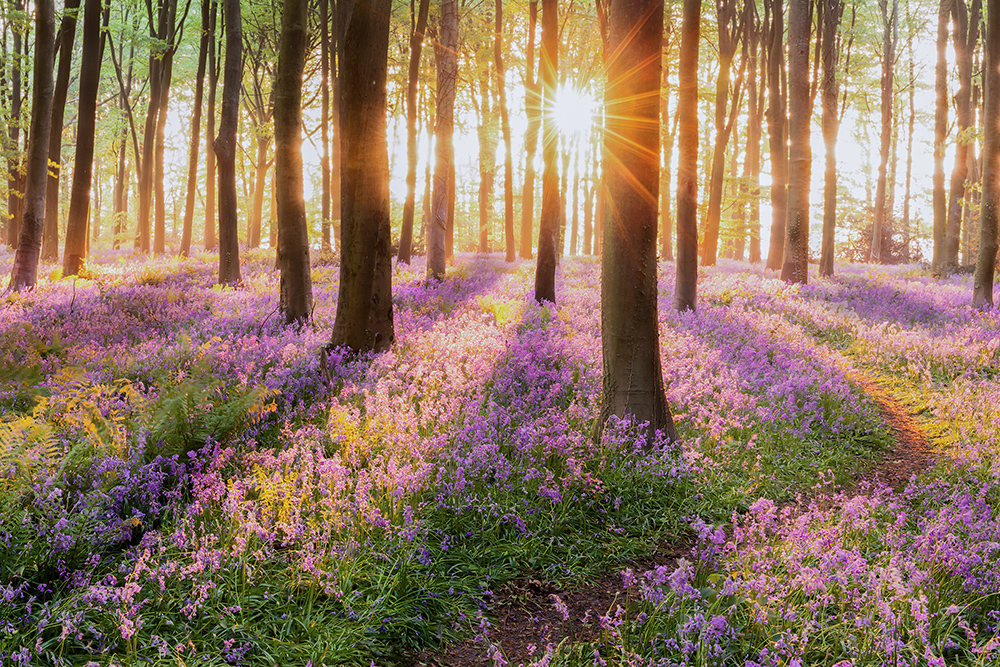
Martin Goodson
What is Forest Bathing?
Exercises in Mindfulness
Relieve stress, reconnect with nature and also ‘The Way’ in this healing practice
 ©
© shutterstock
This article is being written sitting on a train traveling to North Wales, where I will be staying for a couple of nights in a cabin in a wood.
One of the ‘selling points’ on the Air BnB page for the site is an outdoor bath that is heated by lighting a wood fire underneath. Privacy is the surrounding grove of oak trees. However, this is not the bathing I had in mind for this particular exercise!
Forest bathing goes back a long way since for most of the time our ancestors were most likely living in woods and forests since at that time they were the prevalent habitat. However, the linking of time-in-nature with wellbeing is a more recent phenomenon.
For the medievalist, forests were places of danger, both physical and spiritual. They were the haunt of brigands as well as of the fairy folk and demons. It was Sir Walter Scott who began to change how nature was perceived. As more and more people began to live in cities, there was a simultaneous idealising of natural landscapes.
With the advent of the European and English Romantics came the notion that nature had been lost and that we had lost something deeply spiritual as a result. The subsequent arising of nature-worship, naturism, neo-paganism are a legacy of this new attitude and represent a wish to re-connect with nature. For those interested in this history, I would recommend Prof. Ronald Hutton’s excellent history of neopaganism: Triumph of the Moon.
Forest bathing is a prescribed treatment given to people recovering from a range of medical conditions, such as depression and addiction as well as recovery from breast cancer. It is state supported in Finland and Japan. Patients are advised to spend 5 hours a week walking in ancient forest or woods.
According to Wikipedia, the scientific support for these treatments is disputed. It’s unclear to me whether this is a cultural dispute or a scientific one; I’ll leave that to the anthropologists.
Generally, ancient woodland is preferred because of what is called the wood-wide-web. This is the interconnecting mycelial strands which criss-cross older forests and woods and link the trees into a colony that supports each other. These trees and their fungi friends transport food and protective chemicals under the forest floor supporting the sick or hungry trees that need communal support. Such trees are more likely to release chemicals into the forest air that can also support the human immune system.
So how does one ‘do’ forest bathing?
It is recommended that one does this alone and that is should be more a meander than a walk from A to B. This helps to drop any notion of ‘getting anywhere’ in particular. As one does so, one should remain in the present moment and deliberately open out into the senses. To begin, place attention onto each physical sense in turn. Listen, look, smell, feel and take a breath into the mouth to ‘taste’ the air. Once a more grounded attitude is attained, set off slowly walking and staying based in the physical senses. There is no need to try to ‘stop thinking’ just letgo of the thoughts and let them come and go without interference. Be willing to get a bit lost, although maybe keep your phone well charged just in case!
If the tendency to become lost in thoughts arises which may lead to a sense of being taken away from the exercise, then stop and just travel though each of the physical senses again to become grounded once more.
That’s pretty much it! You might find that as you go various insights arise spontaneously. Just note them and continue with the exercise.
At the time of writing this, we still have a few weeks of good weather ahead of us, so why not get out a map of your locality and see where your nearest wood or forest is and make a date in your diary for a short pilgrimage?




